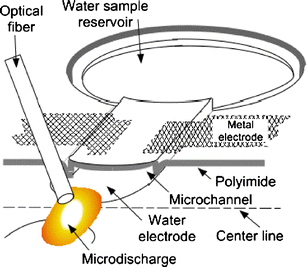

Ever since, several other groups employed halogen bonding for the formation of liquid crystalline materials.

In 2004, Bruce and co-workers reported the first example of a halogen-bonded liquid crystal based on pentafluoroiodobenzene and 4-alkoxystilbazole. With respect to the formation of supramolecular liquid crystals, especially hydrogen bonding and halogen bonding have gained considerable attention. In addition, the self-assembly of the complementary molecular entities provides an easy access to functional systems and enables recyclability and self-healing properties of the materials. The potential for using such micro-plasmas within highly portable miniaturised systems and mu-TAS devices is presented and discussed.Supramolecular chemistry has proven to be an efficient approach for the development of novel smart materials, since it relies on non-covalent interactions, which allow for dynamic responses to external stimuli. The geometry and flow rates used demonstrate the feasibility of integrating such micro-plasmas into other micro-fluidic devices, such as miniaturised CE devices, as a method of detection. Further analysis was performed with an Echelle spectrometer using both argon and air as a carrier gas. The volume required for such detection is approximately 170 nL. A semi-quantitative, absolute detection limit of 17 nmol s(-1) was obtained for sodium with a sample flow rate of 100 microL min(-1) and an integration time of 100 ms in air at atmospheric pressure. A total electrical power of less than 70 mW was required to sustain the discharge. The detection of copper and sodium was achieved, using atmospheric pressure air as a carrier gas, by observation of atomic emission lines of copper at 324 nm, 327 nm, 511 nm, 515 nm and 522 nm and an atomic emission line of sodium at 589 nm using a commercially available miniaturised spectrometer. To realise the ELCAD technique within a micro-fluidic device, a parallel liquid-gas flow was set up in a micro-channel and a glow discharge ignited between the flowing liquid sample surface and a metal wire anode. Detection was achieved using an Electrolyte as a Cathode Discharge source (ELCAD) in which the sample solution itself is used as the cathode for the discharge. Atomic emission detection of metallic species in aqueous solutions has been performed using a miniaturised plasma created within a planar, glass micro-fluidic chip.


 0 kommentar(er)
0 kommentar(er)
